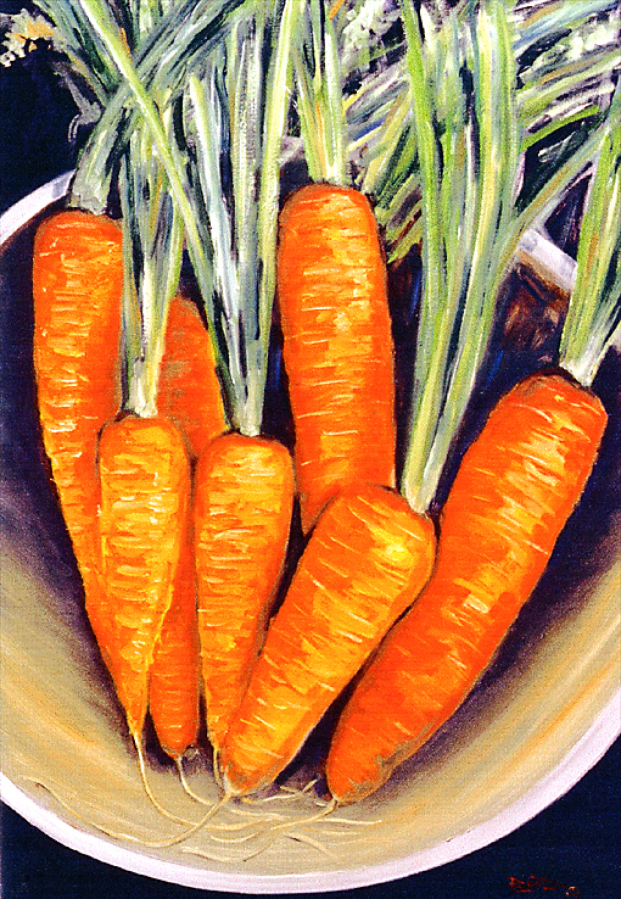Carrots, the favorite food of that rascally rabbit Bugs Bunny and appreciated in cuisine worldwide as an amazing vegetable for its versatility and uses.
Carrots are root vegetables that originated in Persia that were grown for their aromatic leaves and seeds like their close relatives parsley, fennel, dill and cumin. The carrot root started being used as a food source around the first century and were originally purple, red and black. The Dutch created the orange carrot in the late 16th century, enhancing its sweetness and size. European settlers introduced the carrot to North America shortly thereafter.
One medium carrot contains only 25 calories for 1/2 cup sliced. They come in a variety of colors including purple, red, black, white, yellow and orange. Traditional orange carrots are full of antioxidants and good sources of beta carotene, Vitamin A, K and B6. Other carrot colors do not have the same quantity of beta carotene. To receive the full amount of beta carotene available, cook the carrots before eating. This is one of the few vegetables that cooking actually enhances the availability of the nutrients/vitamins.
Widely used in many cuisines, carrots can be eaten in a variety of ways: raw, steamed, boiled, roasted and as an ingredient in many salads, curry, stir-fry, soups, stews and desserts. They can also be juiced, dehydrated, frozen, canned and pickled. For a salad shred carrot with grater, toss with white wine or cider vinegar and sprinkle with salt. For a quick soup put boiled carrots and potatoes in a blender, and add herbs and spices to taste. Or roast with some olive oil and salt at 350 degrees until just tender. The ideas and serving suggestion for this amazing vegetable are endless. And don’t throw your carrot tops away, they can be used in salads or in place of parsley.



